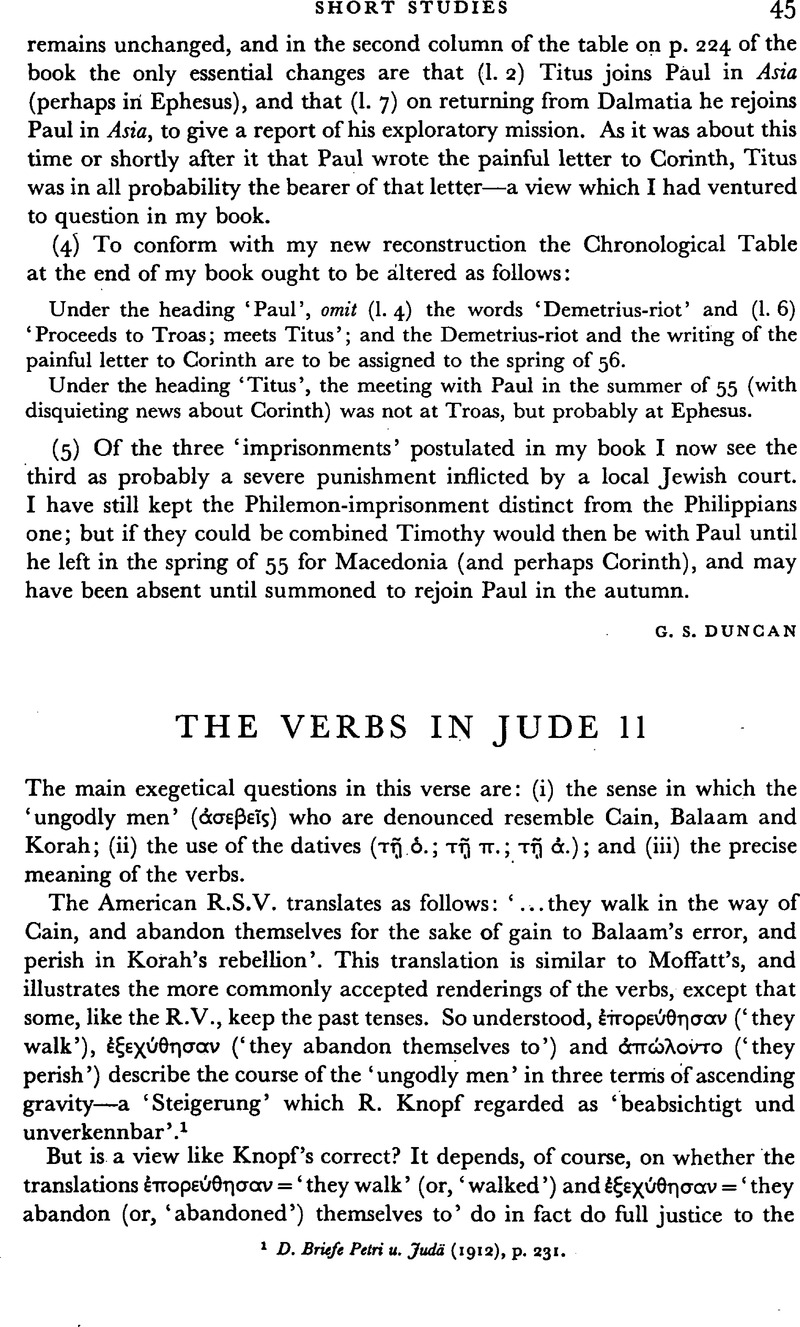Published online by Cambridge University Press: 05 February 2009

page 45 note 1 D. Briefe Petri u. Judä (1912), p. 231.Google Scholar
page 46 note 1 General Epistles (M.N.T.C.), pp. 237f.Google Scholar
page 46 note 2 Cf. Bennett, General Epistles (Cent. B.), p. 336.Google Scholar
page 46 note 3 Cf. too the accounts of Balaam, , Cain, and Korah, in the Jewish Encyclopedia, vols. II, III and VII;Google Scholarand Cain and Balaam in T.W.N.T. (Kittel), 1, 6f., 521ff.Google Scholar
page 46 note 4 Cf. Vermes, G., Deux Traditions sur Balaam (Cahiers Sioniens, ixe Année, no. 4, 12. 1955, pp. 289–302). On p. 298 attention is called to the use of Cain, Korah and Bálaam in T. Sota, iv, 19.Google Scholar
page 46 note 5 Sanh. x. 2f., Ab. v. 19 (Danby, Mishnah, pp. 397f, 458). Further references in Jewish Encyclopedia vols. ii, vii. A more hopeful view of Korah's eternal destiny also occurs, e.g. R. Eliezer in Sanh. x. 3.Google Scholar
page 46 note 6 Wisd. x. 3 (? cf. Charles, Apoc. and Pseud. of O.T., 1, 551); Philo, Quod det. pot. 47f.; 69f. etc.Google Scholar
page 46 note 7 Jubil. iv. 31; Test. B. vii. 3–5. Cf. Jewish Encyclopedia iii, 493. Moore cites a passage expressing ultimate hope for Cain (Judaism, I, 524f.).Google Scholar
page 46 note 8 Test. B. vii. 5. Cf. Jewish Encyclopedia III, 493; and also the treatment of Cain and his posterity in Philo, de Poster Caini, esp. 52f.Google Scholar